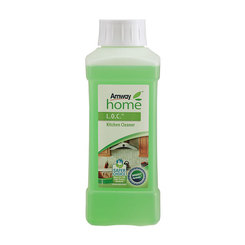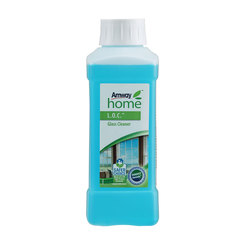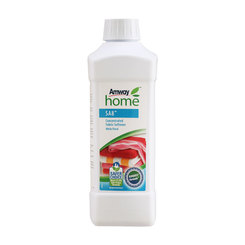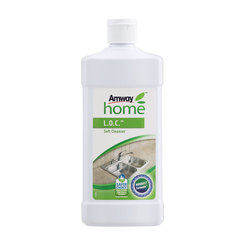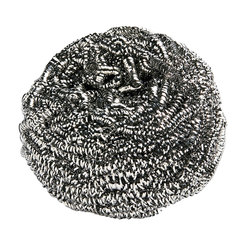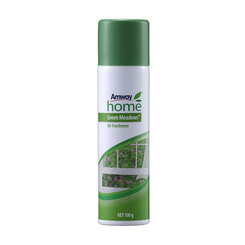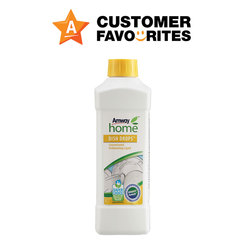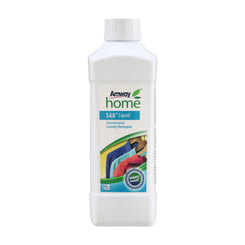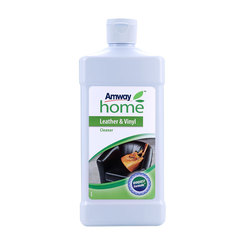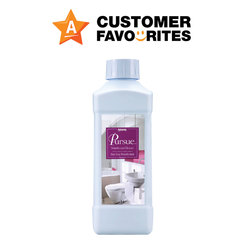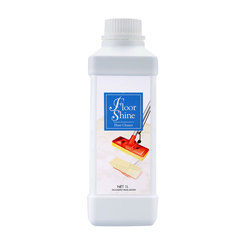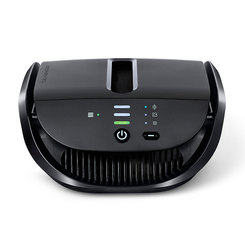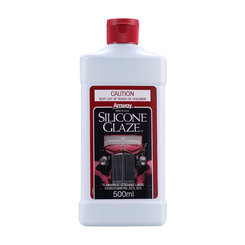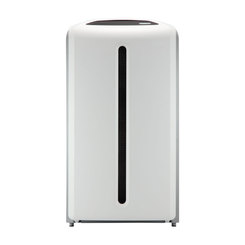{{ product.aboPriceValue | formattedPrice }} ABO/APC Price
Retail Price: {{ product.retailPrice | formattedPrice }}PRODUCT OVERVIEW
Events & Promotions
FAQ
"Activated" means the carbon has been processed to create pores within the carbon itself. This increases the carbon’s surface area. "Pressed" means the carbon has been compacted into a porous block, using special patented technology. When water comes in contact with the activated carbon, chemicals and particulates are trapped in the pores. The walls of these porous channels will also adsorb various organic contaminants. As porosity and surface area increase, so does the activated carbon’s ability to filter contaminants.
Activated carbon readily bonds to and adsorbs many organic carbon-based compounds such as pesticides and herbicides. The carbon used in the eSpring Cartridge has a special distribution of 3 pore types:
- Macropores are large pores that remove larger compounds (atomic mass more than 10,000 units).
- Transition Pores remove medium-sized compounds with atomic mass around 500 units, such as pesticides.
- Micropores remove small compounds with atomic mass of less than 100 units, like THMs.
The carbon in the filter bonds with organic, carbon-based compounds. Minerals and other inorganic compounds do not have a carbon base. Therefore, a bond usually will not form with the carbon, and the minerals will remain in solution in the water and pass through the filter.
It is possible for a well-designed Carbon Filter to remove certain inorganic contaminants. AMWAY has documented that the eSpring Carbon Filter can remove lead, mercury and radon. There are technical reasons why the eSpring Filter is effective at removing lead and other selected inorganic materials, but it is a combined effect of the limited attraction that these materials have to carbon, along with other water chemistry which aids this removal. AMWAY has evaluated the system for the removal of other inorganic materials. But to date, these are the only inorganic materials that meet the strict removal guidelines that have been established. AMWAY will not claim removal of any material unless we are certain of its removal at the end of the filter life. In general, any broad claims a carbon filter marketer makes about inorganic compound removal should be questioned. We do not know of any carbon system that is capable of removing a wide range of inorganic materials throughout the life of the filter.
Chlorine is one of the few exceptions to the carbon-based rule. Chlorine reacts with the carbon filter surface and is converted to chloride. This reaction eliminates the chlorine and its offensive taste and odour.
If there are bacteria present in the incoming water, they may grow in a Carbon Filter overnight, or during periods of inactivity. This is true for all carbon filters on the market – including those treated with silver. The eSpring Water Treatment System uses ultraviolet light to destroy any bacteria present in water after it leaves the carbon filter.
Some ceramic filters may remove some specific bacteria for a short period of time. However, this removal becomes unreliable the longer the filter is used. Whenever a filter marketer makes a claim like this, ask for documented test results showing removal capability at the end of the filter’s rated life.
This is normal. Those black particles are carbon dust left from the filter manufacturing process. Simply allow the water to flow, and the dust will be rinsed away in a few minutes. Besides, allowing water to initially flow for several minutes will thoroughly wet the filter and increase its adsorption capabilities.
The eSpring Cartridge has a removable outer pre-filter that has been designed to protect the Cartridge from premature clogging when exposed to tap waters that contain elevated levels of sediment or turbidity. The pre-filter is a unique design that is made with 1 micron nominal pleated media for more surface area to trap the larger particles that may clog the Carbon Filter. This allows the Carbon Filter to be more effective at reducing contaminants.
Unlike cloth fabric, which is made of woven fibres, non-woven fabric is produced as a single sheet or layer. The non-woven material used in the eSpring outer wrap is a synthetic polymer material known as polypropylene. Polypropylene is inert – which means it will not chemically react or decompose during the life of the filter.
Yes, initially. The carbon activation process leaves an alkaline surface on the carbon that is similar to baking soda. This alkaline surface raises the pH of water that initially passes through the filter to the 9-10 range. This pH shift is well within the acceptable range for drinking water. After approximately 58 litres have passed through the filter, the pH level drops to about 8.5. After 190 litres have passed through, water pH is between 7 and 8, nearly identical to untreated water.
The primary cause for white particles in treated water is water hardness. Treated water may have a slightly higher pH than untreated water. This can cause dissolved calcium and magnesium beneficial minerals – to precipitate and form white or grey flakes that sink to the bottom of the container. These particles generally appear shortly after the installation of a new filter in hard water conditions. Temperature may also be a contributing factor.
Calcium and magnesium, the water hardness minerals, become less soluble as temperatures increase. An increase in water pH – which occurs during the eSpring purification process – can also cause minerals to precipitate. When you combine these two factors by boiling eSpring water, the precipitation is more likely to occur. (In addition, freezing water also causes minerals to precipitate – which is why white specks can sometimes be seen in ice cubes made with eSpring water.)
Scientists who have studied this phenomenon have found it is caused by a reaction of the calcium in hard water and natural compounds in coffee and tea. Since treated water may have a slightly higher pH, this makes the reaction more likely. This only occurs in hard water.
Yes. Flow rate is primarily a measure of the physical particulate removal properties of your filter. If your water has high concentrations of solid particulates, the filter may clog before one year, reducing flow. If your water has a low solid particulate level, the filter may not clog for several years. However, filter life is based both on physical removal properties and chemical adsorption removal. Beyond one year, we cannot guarantee the filter will still remove the many contaminants that require chemical adsorption. Since these contaminants are often tasteless and odourless, the only certain way to assure your cartridge will continue to remove them is to replace the cartridge when the system’s monitor indicates thus.
As long as the filter is properly used and replaced as recommended, this is not an issue.
No. To maintain the performance claimed and documented by AMWAY, the cartridge must be changed every year – regardless of the amount of water treated. Research has shown that large compounds are initially removed by large pores, but through time will diffuse and begin to clog several of the small pores. This reduces the number of small pores available to capture the small compounds, and the capacity to remove the small compounds (THMs) is reduced. This diffusion of large compounds and clogging of the small pores occurs over time and is not just dependent on the number of litres filtered. So, to assure that the filter continues to remove the smallest compounds we say it does, it needs to be replaced at least once a year regardless of the number of litres filtered. If it is not, the small compounds may not be filtered out.
No. That would only happen if water flow was from one end of the filter to another. The eSpring Water Treatment System is designed so that water flows radially inward from the outside along the entire length of the filter. This means that contaminants are dispersed evenly throughout the filter.
No. Although some manufacturers promote backflushing (subjecting filter to a flow of untreated water in the opposite direction) as a way to increase filter life, it will actually reduce the life of a Carbon Filter – for these reasons:
1. As water is processed through a carbon filter, contaminants load up in layers, with the highest concentrations on the outside of the filter. These layers gradually build up inward, and when the layers reach the core of the filter, the filter must be discarded.
2. Backflushing the filter would allow contaminants to build up on the inside of the filter.
3. When the filter is returned to normal operation, the contaminants that built up on the inside of the filter may begin to release into the treated water, reducing the filter’s effectiveness. Ada R&D team is in agreement that backflushing is not appropriate for Carbon Filters.
It has been conclusively proven that the ultraviolet light used in the eSpring Water Treatment System is safe for use in your home. Ultraviolet (UV) light is a form of radiant energy, similar to visible light and radio waves. Like these other forms of radiant energy, UV energy is emitted – or "radiates" – from a source and travels at the speed of light through air and space. For this reason, any form of radiant energy may be referred to as "radiation" – whether it comes from the sun, a light bulb, or the UV lamp in the eSpring Water Treatment System. "Radiation" is not synonymous with "radioactivity". Radioactivity refers only to materials that emit nuclear radiation, such as uranium. There are no radioactive materials inside the eSpring Water Treatment System.
Yes. UV light was first used to treat water in 1919, and is well-recognised as an effective method for treating water without the use of chemicals. It is often used by food processors, beverage companies, bottled water suppliers, pharmaceutical manufacturers and others to treat water used in their production processes.
When the system senses water flow, a sensor will be triggered and it will then turn on the UV Lamp. As long as there is flow of water detected, the UV Lamp will remain on. The lamp will remain on up to 30 seconds after the water flow has stopped.
After installing an eSpring Water Treatment System, the flow rate for unfiltered water will remain unchanged. However, treated filtered water will flow at a maximum rate of 3.4 lpm (0.9 gpm). This lower flow rate provides adequate contact time between the water, the carbon particle filter, and the UV Lamp to assure proper treatment.
If the unit has been inactive, bacteria could grow in the water present within the outlet tubing and diverter. A 30-second flush can help to clear all this water out of the system, replacing it with water treated by the UV Lamp. Due to hygiene purpose, the tubing is recommended to be replaced every 2 years. The diverter should be cleaned when necessary.
No. Boiling is intended to destroy harmful bacteria. The eSpring Water Treatment System destroys more than 99.99% of potentially harmful waterborne organisms, totally eliminating the need for boiling.
Running hot water through the system is not recommended. High temperatures will reduce filter efficiency and may also cause the structural integrity of the unit to be compromised. Optimal removal and adsorption efficiency can be achieved at temperature below 25ºC.
As long as the unit is positioned upright, it will perform properly. When installing the unit, carefully follow the installation instructions in the Owner’s Manual. The unit’s performance or its durability can be affected if installation is carried out differently or modified.
The diverter valve and adapters included with the system are designed to fit nearly all taps on the market. However, a customer may have an unusual tap design that will not work with the adapters. We recommend that the customer use the under-counter mounting option, if possible. Another alternative is to have the customer install a new faucet. If the customer is unwilling to do the above options, the system cannot be used in the household. Installation is to be carried out using the diverter provided or the specially designed faucet offered by AMWAY only. The unit should not be installed directly into the household water supply because the unit is not designed to withstand full line pressure.
The main concern is the housing. Components could be weakened by these strong solutions over time and the solutions may cause discolouration.
It is not recommended, as it will prevent proper heat diffusion from the unit.
Yes. To prevent treated water from becoming contaminated, store in a clean container with a tight-fitting lid. If properly refrigerated in an airtight container, treated water may be stored for up to one week.
Normally, kitchen oil and smoke will not damage the unit. However, if the unit is not regularly cleaned, it may discolour over time. To keep the unit clean, simply wipe the unit with diluted DISH DROPS Dishwashing Liquid.
WE ALSO SUGGEST
-
Jennifer Jones'First DITTO(20)
Created for Jennifer Jones -
Second DITTO List Name(54)
Created for Jennifer Jones -
My Other DITTO List Has a Long Name(999)
Created for Jennifer Jones

 Singapore
Singapore















